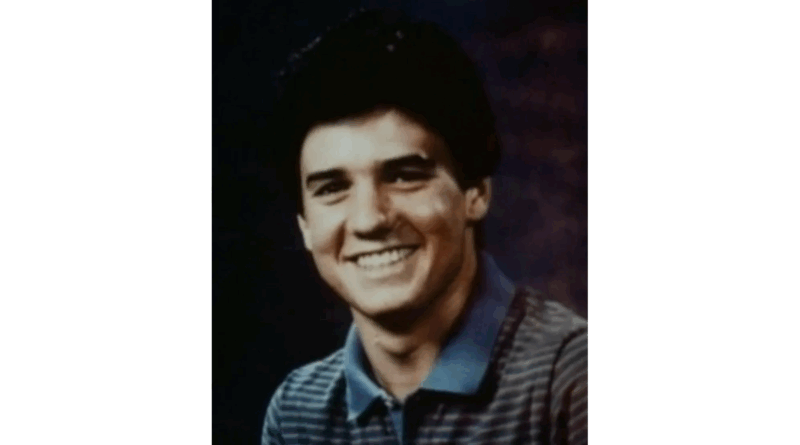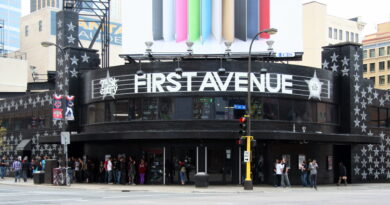Adam Hecht Disappears from Wealthy Neighborhood in Beverly Hills California
Adam Arthur Hecht was born on August 6, 1965, into a prominent Beverly Hills family. His father was an Academy Award–winning film producer and his mother a former model turned community volunteer. Growing up, Adam lived in a spacious home on a quiet tree-lined street alongside his older half-siblings and his two younger full siblings. From an early age, he displayed a natural athleticism and a calm, introspective disposition that set him apart from his peers. His parents encouraged both academic achievement and extracurricular pursuits, enrolling him in piano lessons, art classes, and eventually tennis clinics at the local country club.
Family and Upbringing
Despite the comfort of his surroundings, Adam’s home life was marked by both love and high expectations. His parents, accustomed to the demands of the entertainment industry, instilled in him a strong work ethic and a sense of responsibility. Dinner conversations often turned to current events, film production anecdotes, or philanthropic planning. Adam’s relationship with his brother and sister was close; they bonded over family vacations to the mountains and occasional movie nights at home. Friends recall a boy who was generous with his time and possessions, quick to defend anyone he saw being treated unfairly.
Emergence as a Tennis Instructor
By his late teens, Adam had become a standout player on his high school tennis team. After graduating from Beverly Hills High School, he chose to remain in Southern California and pursue a career as a tennis instructor rather than attend college immediately. He secured a position at an elite tennis academy, where he taught both beginners and competitive juniors. His reputation for clear instruction, quiet encouragement, and a strategic mind made him popular among students and parents alike. He lived in a comfortable one-bedroom apartment near his family’s residence, maintaining both independence and easy access to his loved ones.
Meeting “Tony” and the Unusual Friendship
In the spring of 1989, Adam’s life took an unexpected turn when he met a homeless man who called himself “Tony.” The two first crossed paths at a neighborhood café where Adam often grabbed breakfast before his early coaching sessions. Fascinated by Tony’s stories of life on the streets, Adam began inviting him to join meals and engaging him in conversation. Despite concern from friends and family over Tony’s unpredictable behavior, Adam saw in him a chance to learn about a world far removed from his own. Within weeks, Adam had offered Tony temporary lodging in his apartment, a gesture that would prove pivotal in the weeks to come.
Strange Rituals and Growing Obsession
What began as simple companionship evolved into a series of peculiar “rituals” led by Tony. Under the cover of darkness, the two ventured into the alleys of Skid Row, where Tony claimed they were building endurance of mind and spirit. Adam, intrigued by the idea of shedding worldly attachments, participated fully—even at the cost of physical pain. On one excursion, a makeshift candle burned too close to Adam’s hand, leaving a burn mark that would later become symbolically linked to his fate. Neighbors reported hearing low chanting through Adam’s apartment walls during these late-night gatherings.
Events Leading Up to the Disappearance
By early June 1989, Adam’s preoccupation with Tony’s street philosophy had deepened. He began canceling lessons and missing planned family dinners, citing a need for “inner work.” His protective circle grew uneasy as Tony became more possessive, occasionally berating visitors and insisting on performing smudging rituals over food. On the evening of June 6, Adam hosted a small gathering of close friends, introducing them to Tony and demonstrating intense enthusiasm for discussions about spiritual transformation.
The Morning of June 7, 1989
The following morning, Adam awoke before sunrise and informed Tony that he needed to collect a rental car for family errands. Witnesses in the parking garage saw him place his tennis bag and personal items into the back seat of a nondescript sedan. He waved to a valet attendant and drove off down a palm-lined street. That was the last confirmed sighting of him. By midday, he had failed to show up for a scheduled lesson, prompting calls to his apartment.
The Investigation and Police Response
Concerned friends and family contacted the Beverly Hills Police Department later that afternoon. Officers visited Adam’s apartment and encountered Tony, who appeared disheveled and evasive. When asked about Adam’s whereabouts, Tony insisted he had not seen him since early that morning. Investigators noted disarray in the apartment—unused coffee cups, scattered playing cards, and smudged mats on the floor—but found no direct evidence of foul play. Tony was questioned extensively and eventually evicted from the premises, but no charges were filed.
Discovery of the Abandoned Car
Approximately two weeks after Adam’s disappearance, a routine traffic patrol officer discovered the rented sedan parked on a quiet residential block several miles from his apartment. The engine was cold, the keys still in the ignition, and the interior intact. Adam’s wallet, containing hundreds of dollars in cash, credit cards, and his driver’s license, sat undisturbed in the glove compartment. The vehicle bore multiple tickets for expired parking over consecutive days, suggesting it had been stationary for some time.
Theories and Speculations
From the outset, observers have debated whether Adam chose to disappear voluntarily or if he fell victim to a darker scheme. Some point to his growing disillusionment with material comforts and his fascination with street life as evidence of a self-imposed vanishing. Others believe Tony, who remained tight-lipped and later vanished himself, knew more than he revealed. There is no consensus on whether that burn scar was part of a symbolic rite of passage or a sign of coercion.
Media Coverage and Public Reaction
The mysterious circumstances drew national attention when an episode of a popular television true-crime series recounted the case in late 1990. Forum discussions sprang up among amateur sleuths, and podcasts have revisited the story in recent years. Despite this, no credible new leads have emerged. Family members have endured both frustration and grief, alternating between hope for Adam’s return and the fear of confirming a tragic outcome.
Enduring Mystery and Legacy
More than three and a half decades after June 7, 1989, the disappearance of Adam Hecht remains an open case. His story persists as a cautionary tale about the unpredictable intersection of wealth and poverty, privilege and peril. For those who knew him, Adam’s legacy is that of a generous spirit who sought profound understanding—an ambition that ultimately left an unanswerable question. Until definitive evidence is uncovered, the streets of Los Angeles will hold their secrets, and the name Adam Hecht will continue to echo in uncertain whispers.
Discover more from City Towner
Subscribe to get the latest posts sent to your email.




